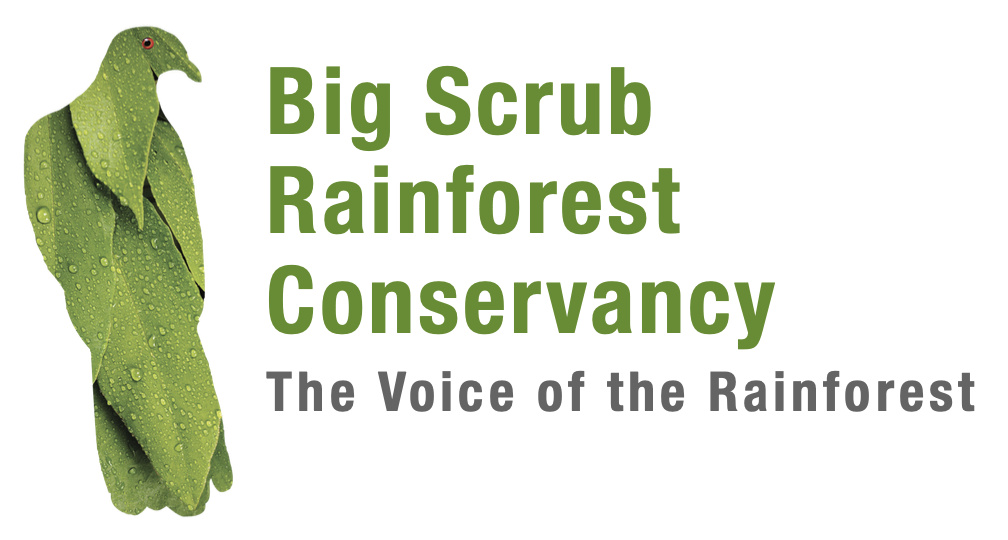A personal contribution from Big Scrub Landcare member Ken Dorey.
The Black Bean, or Moreton Bay Chestnut, (Castanospermum australe) is a common Big Scrub tree and, as it is easy to recognise, it is often one of the first trees that rainforest enthusiasts learn to identify. What’s not as obvious on first glance is the tree’s unique and interesting history.
The Black Bean is the only species in the genus Castanospermum but it is incredibly widespread — they’re native to coastal rainforests from Bellingen to Cape York and are also found in New Caledonia and Vanuatu. Interestingly, recent research traced the genesis of the species in NSW back to a single maternal source. The study led by Dr Maurizio Rossetto at the Royal Botanic Gardens Sydney found that the tree was transported by Aboriginal people from the tropics and its progeny subsequently distributed across NSW due to its high nutritional value.
The Black Bean is a beautiful tree, often planted as a street tree, that bears sprays of red and yellow pea-shaped flowers which attract birds, bats and butterflies. Finding the resulting large pods, with their 3-5 large bean-like seeds on the forest floor never loses its magic; they make great boats and the sprouted seeds make perfect indoor pot plants.
Black Beans were, however, not universally appreciated. Boats leaving the Richmond laden with Red Cedar often carried Beech, Pine and Teak, but Blackbeans were routinely burned, along with incalculable amounts of other valuable timbers, when the Big Scrub was cleared. Indeed, the Black Bean was often targeted, as its seeds were considered toxic to stock.
In 1886 the Mining Department received a report from the Richmond River that, “horses and cattle were ravenously fond of the beans… but soon after eating them they dropped dead… post-mortem examinations invariably show a compact mass of indigested beans in the stomach”. A subsequent Government analysis found, “digestible fibre, woody fibre, mineral matter or ash, starch and what appears to be a glucoside soluble” and concluded “the beans are non-poisonous and any ill-effects… is owing to their indigestible nature alone”.
Be that as it may, the local tribes had been eating Black Bean seeds, after an elaborate pulping and bleaching, for millennia. You can see the process in detail in the video below produced by the Royal Botanic Garden Sydney: If you’re thinking of eating Black Bean seeds, I’d suggest you watch it twice!
The beauty of the Black Bean did eventually win friends. In 1861 the director of the Sydney Botanic Gardens wrote glowingly of the Blackbean: “It would almost appear as if this timber had escaped the notice of even those settlers residing in the district… its extreme beauty and size, would entitle it to rank high among our timbers… as an ornamental tree it is in my opinion unequalled by any in this hemisphere”. By 1887 Sydney nurseries were offering Black Bean seedlings for sale and in 1907 a motorist boasted: “we hum softly up the North Grafton streets, under the black shade of the trees, plane and Black Bean, Jacaranda and Camphor Laurel”. It was a dubious boast, in my opinion!
By 1913 Black Bean timber was being used in the décor of Atlantic liners and in prestigious London buildings. One Black Bean advocate, the Australian architect designing the new Australia House in London, lamented that, “hardy Queensland bushmen were encroaching on these priceless Black Bean preserves for firewood, or ringing trees worth £100 to afford five-pound cows a little extra grass”. Ouch!
To me, Black Beans finally shed their pseudo noxious-weed status when, in 1939, the Sydney Morning Herald featured a photograph of “tall and graceful” Black Beans under the banner Brotherhood of Venerable Trees.
With this in mind, perhaps a more imaginative, a more appreciative, cedar-getter might have called the Big Scrub, “The Venerable Forest”?
Photo credit: John Robert McPherson


